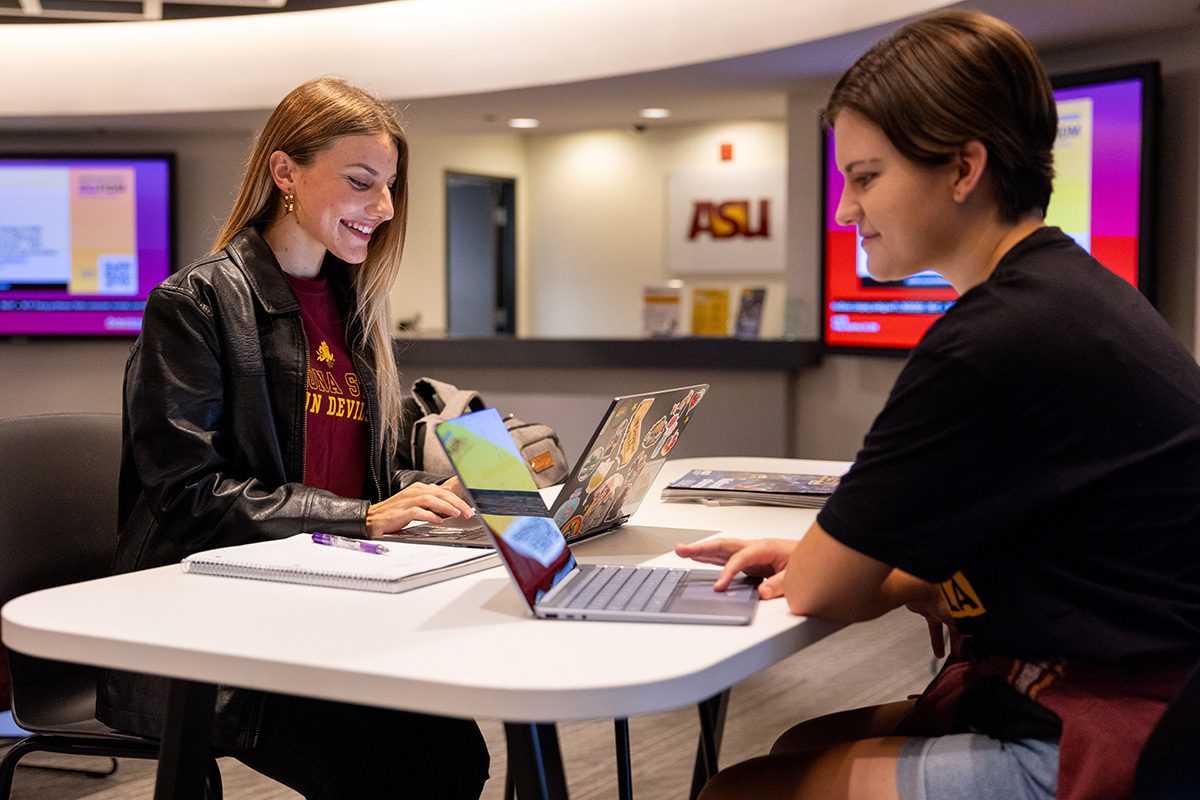Sensory-Friendly Spaces

The Sensory-Friendly Spaces Initiative is an emerging, cross-campus effort to make ASU a more welcoming environment for neurodivergent individuals and anyone who benefits from lower-stimulation, more predictable experiences. This initiative is grounded in both research and lived experience. It aims to address physical spaces, event environments, and potentially digital experiences—supporting sensory regulation, reducing overwhelm, and empowering people to participate on their own terms.
Why Sensory-Friendly Spaces Matter
Sensory-friendly design is about both accessibility and belonging. From students navigating burnout to staff who experience sensory overload, thoughtfully designed spaces allow more people to show up, stay present, and engage fully. The initiative was inspired by grassroots work within ASU communities—including Next Lab, Enterprise Technology, libraries, and student support units—who saw the need for spaces that offer quieter lighting, lower noise, flexible seating, and clearly communicated expectations. These spaces are a great example of how accessible and inclusive design makes things better for everyone.
Component 1: Define the Vision
The initiative is focused on designing flexible, lower-stimulation spaces that reduce sensory overload and provide autonomy for attendees and visitors.
These may include:
- Quiet zones in event and public spaces
- Sensory support toolkits and signage
- Design guidelines for lighting, acoustics, layout, and materials
- Fragrance-free and visual-clutter-minimized zones
- Potential participation in the Hidden Disabilities Sunflower program to help staff and attendees discreetly signal hidden accessibility needs
- A “Sensory-Friendly Verified” badge system to recognize trained individuals and certified inclusive spaces across campus
ASU is positioned to become a national leader in sensory-friendly innovation in higher education, with a vision of building inclusive spaces that benefit both neurodivergent and neurotypical communities.
Component 2: Build the Collaborative Core
A cross-functional working group is forming to shape the initiative’s structure and outcomes.
The working group includes:
- Javier, Digital Learning & Microcredentials: Leads development of digital credentials and inclusive training modules.
- Tim, Campus Spaces & Libraries: Identifies and guides implementation of pilot spaces across campus libraries and public zones.
- Michael, Systems Architect & Documentation: Grounds the initiative in lived experience and supports sustainable workflows, documentation.
Next Lab serves as an incubator and strategic convener, helping align ideas with action.
Component 3: Advance the Work Through Pilot Projects
Initial actions are underway to establish:
- 1–2 pilot locations for quiet zones or sensory-friendly lounges
- A partnership exploration with the Hidden Disabilities Sunflower Program
- A “Sensory-Friendly Verified” label to recognize spaces and services that meet core accessibility standards
- A modular training strategy, co-designed with Learning Experience experts, to promote awareness and sustainable practices
Sample pilot ideas may include Hayden Library, campus hubs, and large ASU events such as Engage or Summer Camp.
Project showcase:




Launch date:
- Fall 2025
Contributors & Credits:
- Tim Feller
- Javier Motta-Mena
- Michael Blackledge
Partners:
- ASU Libraries
- ASU Enterprise Technology
- ASU Next Lab
Sensory-Friendly Resources:
- ASU Disability Resource Center (DRC)
- Sensory-Friendly Solutions (Certification)
- Hidden Disabilities Sunflower Program
- KalmSpot.com (sensory-friendly directory)
- CAST: Universal Design for Learning (UDL)
- Neurodiversity as a Competitive Advantage (HBR)
ASU Next Lab™
Powered by collaboration across ASU’s innovation ecosystem.
Got an idea, project, or question? Connect with Next Lab →